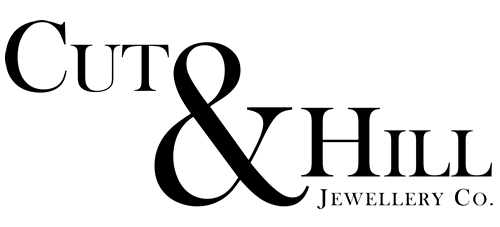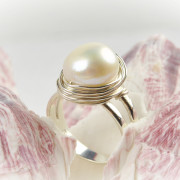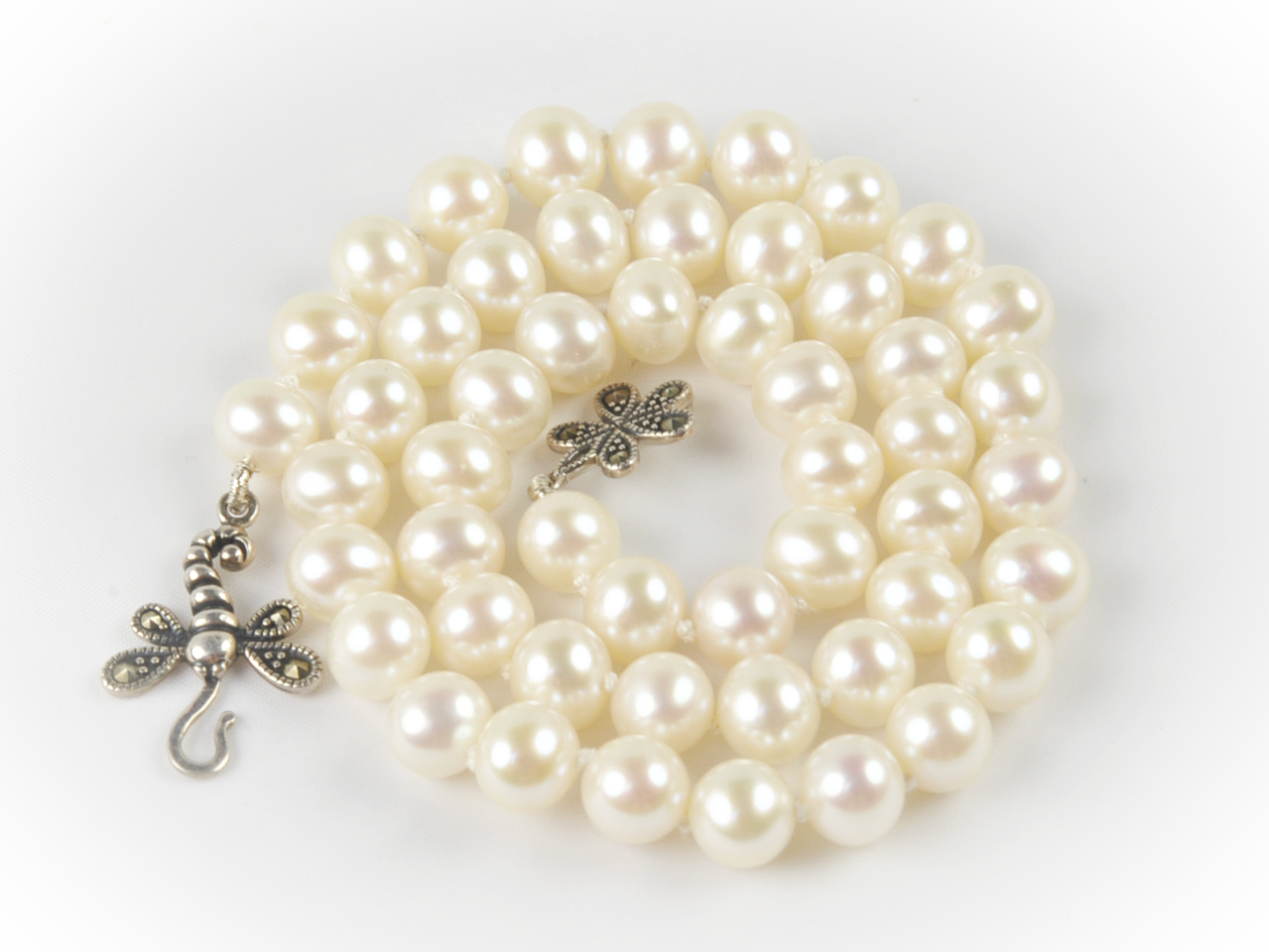Are Cultured Pearls Real or Fake?
Are cultured pearls real?
People will often ask me if cultured pearls are real or fake…they are absolutely REAL. The verb “to culture” means to “maintain in conditions suitable for growth” and is also significantly more appealing than the negatively-connotated word, “farmed”; but, that’s exactly what they are. Today, 99% of pearls in the market are cultured, whether saltwater or freshwater.
Are cultured pearls less valuable? Yes and no. A cultured pearl is grown in pearl farms using a natural production process that emulates that of a “wild” pearl. A small irritant, or nucleus, is placed in the mussel or oyster to incite the production of “nacre” – mainly comprised of crystallized calcium carbonate (CaCo3), more commonly known as Mother-of-Pearl. It is from this irritant that a pearl is achieved.
In pearl farms, an artificially created environment will optimize pearl production, often allowing for the development of valuable pearls. “Perliculture”, or pearl farming, makes it possible to produce pearls in larger sizes than can grow in nature. “Wild” pearls almost disappeared from the market in the late 1800s due to over-harvesting. Today, they’re extremely rare and can command a ransom. Sadly, the days of the pearl divers have long since disappeared.
Are cultured pearls identical? NO. Because cultured pearls are developed in the same way a mussel or oyster would create a “wild” pearl, each pearl is unique. In fact, it is quite a challenge to find pearls of similar size and shape; however, at Cut & Hill Jewellery, we revel in their uniqueness, developing pieces that showcase the diversity of the pearls’ shapes and colours.
Enjoy your cultured pearls and treat them with care. They will bring you joy and have value to you which, ultimately, is what is important.
Alison
Owner & Designer



